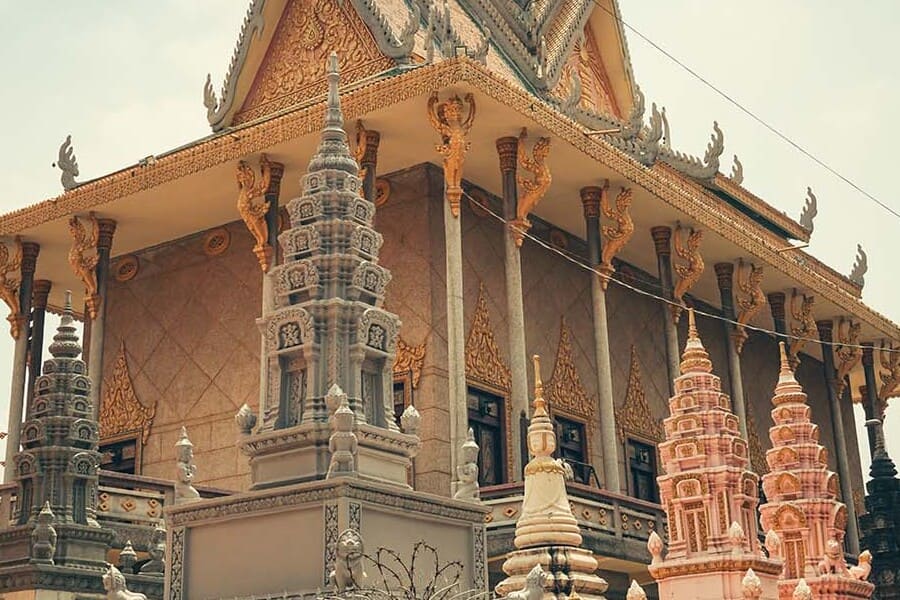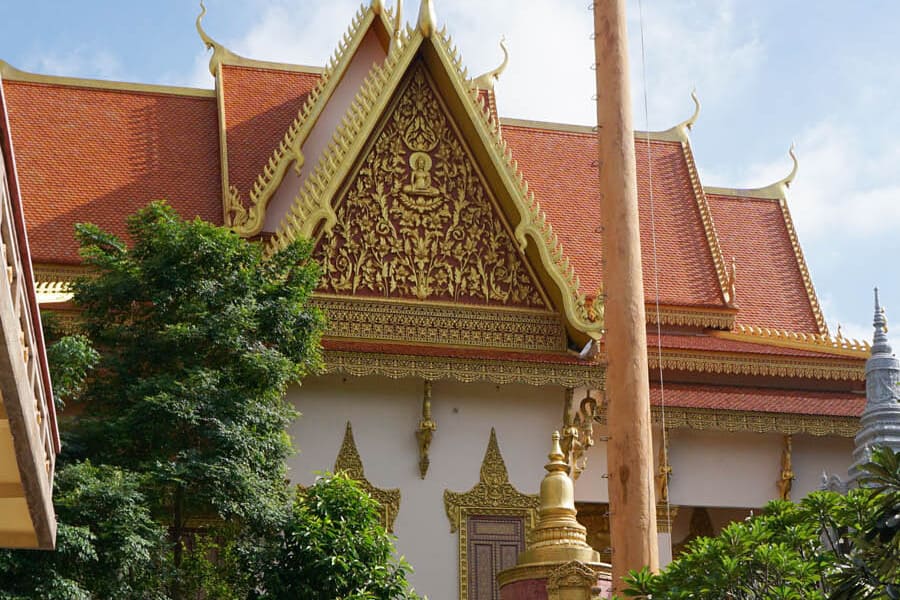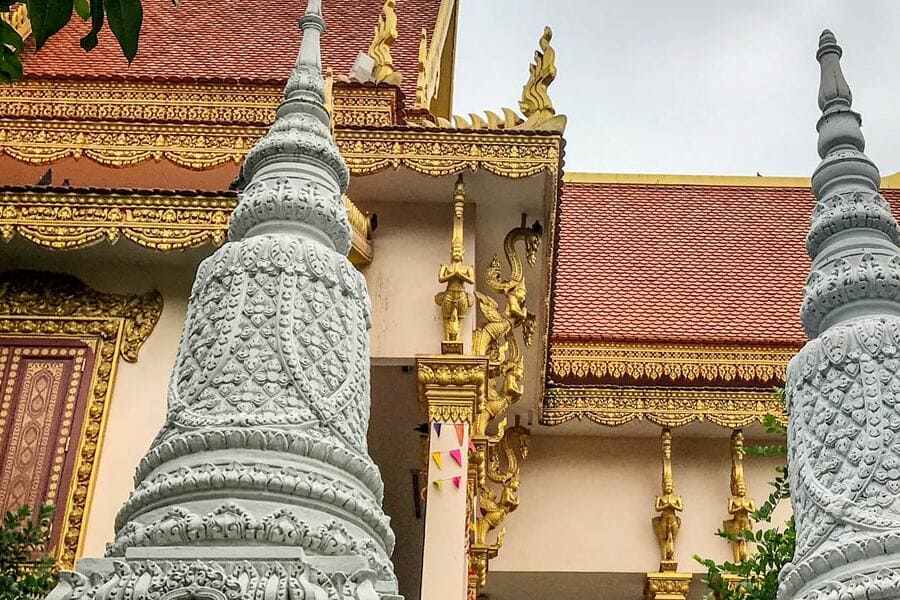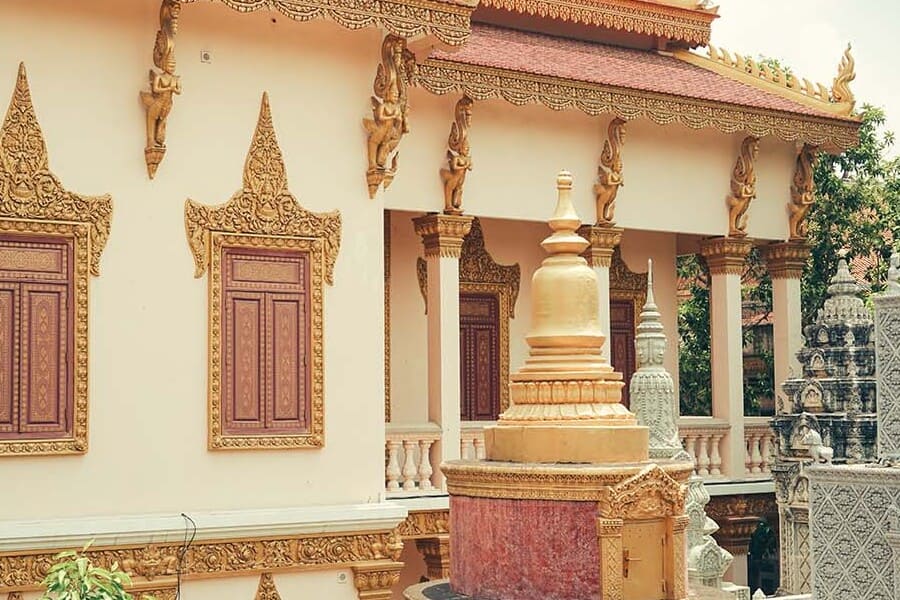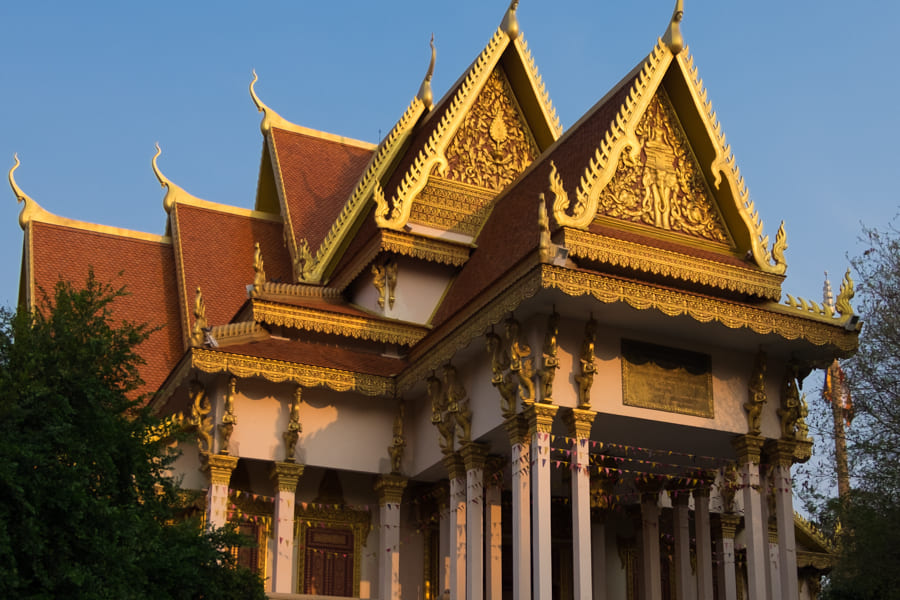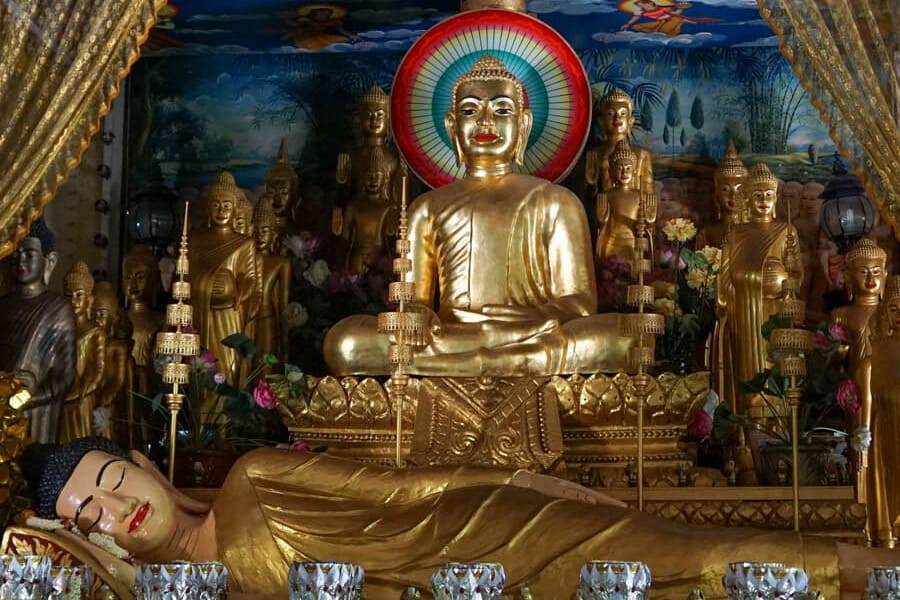During your Cambodia tour package, exploring Wat Langka in Phnom Penh is a serene escape into history. As one of the city's oldest temples, Wat Langka offers a tranquil setting amidst lush gardens and traditional Khmer architecture. Known for its peaceful ambiance and historical significance, this temple serves as a cultural oasis where visitors can admire ancient relics and experience traditional Buddhist practices. Located near other major attractions in Phnom Penh, Wat Langka provides a captivating glimpse into Cambodia's rich religious heritage and architectural splendor.
Contents
An overview of Wat Langka Temple
History of Wat Langka Temple
The history of Wat Langka Temple traces back to the 15th century during the reign of King Ponhea Yat, making it one of Phnom Penh's oldest and most revered temples. Legend has it that the temple was founded by the famous monk Preah Langka, who was renowned for his wisdom and spiritual teachings.
Originally constructed as a sanctuary for Buddhist monks and scholars, Wat Langka played a pivotal role in the dissemination of Theravada Buddhism and the preservation of Cambodian cultural heritage. Over the centuries, the temple underwent several expansions and renovations, each reflecting the architectural styles and religious influences of its respective era.
During the Khmer Rouge regime in the 1970s, Wat Langka, like many other religious sites in Cambodia, suffered significant damage and destruction. However, following the fall of the regime, efforts were made to restore and revitalize the temple, ensuring its preservation as a cultural and spiritual landmark.
Today, Wat Langka stands as a testament to Cambodia's enduring Buddhist tradition and serves as a place of worship, meditation, and cultural exchange. Its storied history and architectural splendor continue to attract visitors from around the world, offering a glimpse into Cambodia's rich spiritual heritage.
Architectural Features of Langka Temple
Wat Langka Temple showcases a captivating blend of traditional Khmer architectural elements and unique design features that reflect its rich cultural heritage. Here are some architectural features of the temple:
- Main Prayer Hall (Vihara): The main prayer hall, or vihara, is the central focus of Wat Langka. Typically constructed in the traditional Khmer architectural style, the vihara serves as the primary worship space where Buddhist ceremonies and rituals are conducted. Its spacious interior often houses revered Buddha statues, intricate murals depicting Buddhist stories, and ornate carvings adorning the walls and ceilings.
- Stupas and Pagodas: Surrounding the main prayer hall, Wat Langka may feature several stupas (dome-shaped structures) and pagodas (tower-like structures). These architectural elements serve as symbolic representations of enlightenment and spiritual attainment. Stupas often enshrine relics or sacred scriptures, while pagodas serve as meditation spaces or commemorative monuments.
- Decorative Motifs and Carvings: Wat Langka is adorned with intricate decorative motifs and carvings that showcase the skilled craftsmanship of Khmer artisans. These decorative elements can be found on pillars, doorways, and facades throughout the temple complex. Common motifs include lotus flowers, mythical creatures, celestial beings, and intricate geometric patterns.
- Naga Balustrades: Like many Khmer temples, Wat Langka may feature naga balustrades lining the staircases and entrances. These serpentine railings, adorned with sculpted nagas (mythical serpents), symbolize protection and guardianship in Buddhist tradition.
- Courtyard and Gardens: Surrounding the temple structures, Wat Langka often boasts lush greenery, serene courtyards, and landscaped gardens. These outdoor spaces provide a tranquil setting for meditation, contemplation, and leisurely strolls, enhancing the spiritual ambiance of the temple complex.
The cultural significance of Wat Langka
Wat Langka holds profound cultural significance within Cambodian society, serving as a spiritual sanctuary and a center for Buddhist learning, meditation, and cultural exchange. Here are some key aspects of its cultural significance:
- Spiritual Center: As one of Phnom Penh's oldest and most revered temples, Wat Langka plays a central role in Cambodia's religious landscape. It serves as a place of worship and reverence for devout Buddhists, who come to pay their respects to the Buddha, offer prayers, and participate in religious ceremonies and rituals.
- Buddhist Education: Wat Langka has a long-standing tradition of Buddhist education and scholarship. Monks residing at the temple often serve as teachers and mentors, imparting Buddhist teachings, philosophy, and ethics to students and devotees. The temple's library may house ancient scriptures, religious texts, and scholarly works, contributing to the preservation and dissemination of Buddhist knowledge.
- Cultural Preservation: The temple serves as a custodian of Cambodia's cultural heritage, preserving traditional Khmer architecture, art, and craftsmanship. Its architectural features, decorative motifs, and religious artifacts reflect centuries of Khmer cultural and artistic expression, providing valuable insights into Cambodia's rich cultural heritage.
- Community Hub: Wat Langka serves as a gathering place for the local community, fostering social cohesion and collective identity. It hosts various cultural events, religious festivals, and communal activities that bring people together, promoting solidarity, mutual support, and cultural exchange among residents and visitors alike.
- Tourist Attraction: Wat Langka attracts tourists and visitors from around the world who seek to experience Cambodia's spiritual and cultural heritage. Its serene setting, architectural beauty, and historical significance make it a popular destination for cultural exploration, religious pilgrimage, and contemplative retreats.
Practical information for tourists planning to visit Wat Langka
Opening hour
6:00am-19:00 pm form Mondays to Sundays
Best time to visit Wat Langka
- Wat Langka is typically open to visitors during daylight hours, with mornings and evenings being ideal times to visit when the temperature is cooler and the atmosphere is more peaceful.
- Consider visiting during special events or religious ceremonies, such as Buddhist holidays, full moon festivals (Pchum Ben), or merit-making ceremonies, to witness traditional rituals and cultural celebrations.
Attractions near Wat Langka
While exploring Wat Langka, visitors have the opportunity to discover other nearby attractions in Phnom Penh that offer further insights into Cambodia's rich cultural heritage. Here are some notable sites to explore:
- Wat Botum Park: Located adjacent to Wat Langka, Wat Botum Park is a serene green space offering a peaceful retreat from the city's hustle and bustle. Visitors can stroll through the park's manicured gardens, admire the scenic lake, and observe local residents practicing tai chi or engaging in leisure activities.
- Independence Monument: A short distance from Wat Langka, the Independence Monument stands as a symbol of Cambodia's sovereignty and resilience. Designed in a traditional Khmer style, this iconic landmark commemorates the country's independence from French colonial rule and is surrounded by manicured gardens and fountains.
- Royal Palace and Silver Pagoda: Just a short tuk-tuk ride away, the Royal Palace complex is a must-visit destination in Phnom Penh. Explore the ornate buildings, lush gardens, and intricate pagodas of the Royal Palace, and marvel at the dazzling treasures housed within the Silver Pagoda, including a golden Buddha statue adorned with diamonds.
- National Museum of Cambodia: Delve into Cambodia's rich history and artistic heritage at the National Museum of Cambodia, located near Wat Langka. The museum's collection includes ancient Khmer artifacts, sculptures, ceramics, and religious objects, providing insights into the country's cultural evolution from prehistoric times to the present day.
- Wat Phnom: Situated atop a small hill overlooking the city, Wat Phnom is a sacred temple and popular pilgrimage site in Phnom Penh. Climb the staircase flanked by mythical naga serpents to reach the temple's summit, where you can explore shrines, statues, and lush gardens while enjoying panoramic views of the city below.
- Central Market (Phsar Thmei): Experience the vibrant atmosphere of Phnom Penh's Central Market, located within walking distance of Wat Langka. Browse through stalls selling local handicrafts, souvenirs, clothing, and fresh produce, and immerse yourself in the sights, sounds, and flavors of Cambodian street life.


